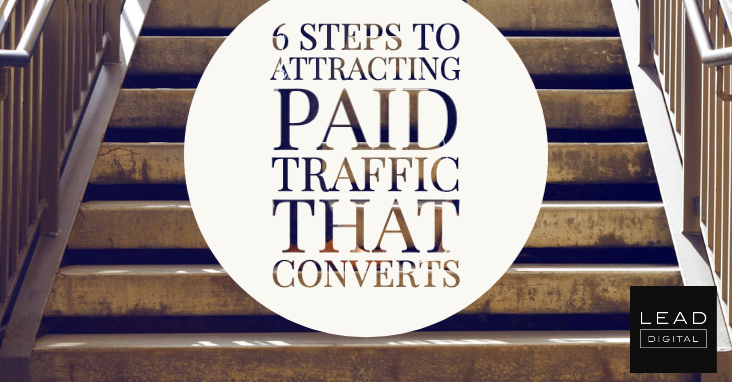 Driving traffic to a website is a real challenge: SEO and content marketing rarely generate results overnight, whilst social media marketing can be pegged back by constant algorithmic changes. This can lead some marketers to prioritize paid web traffic (PPC) if they are launching campaigns and seeking quick results.
Driving traffic to a website is a real challenge: SEO and content marketing rarely generate results overnight, whilst social media marketing can be pegged back by constant algorithmic changes. This can lead some marketers to prioritize paid web traffic (PPC) if they are launching campaigns and seeking quick results.
However, paid traffic generation certainly doesn’t guarantee quick results, as you’ll face a wide variety of factors from audience behaviors to advertising platforms. Each paid traffic source has its own price policy and requirements for the ads it presents, which means you can end up generating countless versions of ad copy, getting clicks that never convert into leads and sales, and overpaying for customers that don’t offer a good return on your investment.
These challenges can be overcome by creating and implementing a calculated and considered paid traffic strategy that relies on a combination of manual planning and AI automation.
In this article, I will explain how paid web traffic works, and how you can make it effective for your business with a comprehensive approach.
- What is Paid Search Traffic and How Does it Work?
- How to Get Converting Paid Traffic to Your Website in 6 Steps
- Step 1: Create a Smart Paid Traffic Roadmap
- Step 2: Plan Your Budget Wisely
- Step 3: Create Winning Ad Copy
- Step 4: Launch an Effective Landing Page
- Step 5: Utilize All the Platforms
- Step 6: Introduce Automation
- Budgeting
- Ad Copy
- Platforms and Optimization
- Monitoring and Reporting
- Building a Paid Traffic Strategy for Your Business
What is Paid Search Traffic and How Does it Work?
Paid web traffic consists of visitors who land on your website after clicking on an advert. It can come from a variety of sources:
- Display ads: Banners, texts, images, etc. placed on third-party websites;
- Paid search: Ads that search engines like Google and Bing will show on their results pages (SERPs);
- Social media ads: Ads served to users on social media platforms like Facebook, Instagram, LinkedIn, etc;
- Sponsored content: Advertisers’ content that publishers are paid to distribute; and
- Native ads: Ads that appear on a platform in a similar fashion to its existing media.
According to The State of PPC in 2019-2020 by Hanapin Marketing, 74% of marketers consider paid traffic generation to be a huge driver for their business. We need to recognize the key differences between paid and organic traffic from search engines to understand why that might be:
| Where your content appears | How you can get more visits | How long the results take | Price | |
| Organic traffic | You can occupy different positions on SERPs depending on how relevant your content is considered to be by the search engine, but some of the ads on the first page will always be higher | By optimizing for search engines in a way that outperforms your competitors | It is different for everyone, but strategies can take months or years to have a significant impact | You don’t have to pay to appear in organic SERPs, but you do have to pay to create and optimize content, and invest in building links to increase your domain’s authority |
| Paid traffic | At the top and the bottom of search results pages | By managing bidding options, targeting options, and tweaking ad copy to outperform your competitors | You can start getting visits and conversions on the day that you launch your ads, if properly optimized | You pay based on the chosen model, e.g. cost-per-click (CPC) |
It’s tempting to think that a switch to PPC will help you get more visits, especially when you can essentially buy them, but basic traffic is not what you need. Paid traffic needs to generate leads and transactions.
This is known as ‘relevant’ or ‘converting’ traffic, which means that the visitors you attract should be more likely to make a purchase. To get such visitors from your paid traffic sources, wherever they are placed, you can follow a 6-step system that covers each stage of the customer journey, from clicking on an ad to becoming a paying customer.
As part of a longer-term strategy further down the line, you’ll be able to leverage other digital marketing tactics to encourage these customers to stay with you. – Read more



